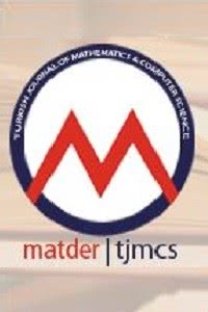Comparative Study of Algebraic Wall Model and Differential Equation Wall Model in Large Eddy Simulation of Turbulent Channel Flow
Comparative Study of Algebraic Wall Model and Differential Equation Wall Model in Large Eddy Simulation of Turbulent Channel Flow
___
- [1] Anderson, Jr. J. D., Computational Fluid Dynamics, McGraw-Hill, New York, 1995.
- [2] Balaras, E., Benocci, C., Piomelli, U., Two-layer approximate boundary conditions for large-eddy simulations, AIAA J., 34(6)(1996), 1111- 1119.
- [3] Cabot, W., Large-Eddy Simulations with Wall Models, In: Annual Research Briefs 1995, Center for Turbulence Research, Stanford University, CA, 1995, 41-50.
- [4] Cabot, W., Moin, P., Approximate Wall Boundary Conditions in the Large-Eddy Simulation of High Reynolds Number Flow, J. Flow Turbulence Combust., 63(2000), 269-291.
- [5] Dritselis, C. D., Large eddy simulation of turbulent channel flow with transverse roughness elements on one wall, Int. J. Heat Fluid Flow, 50(2014), 225-239.
- [6] Ferziger, J. H., Peric0, M., Computational Methods for Fluid Dynamics, Springer-Verlag, Berlin, 2002.
- [7] Grotzbach, G., ¨ Direct numerical and large eddy simulation of turbulent channel flows, In: Encyclopedia of Fluid Mechanics 1987, Cheremisinoff, NP ed: Gulf Pub, Chap. 34, 1987, 1337-1391.
- [8] Ham, F. E., Lien, F. S., Strong, A. B., A Fully Conservative Second-Order Finite Difference Scheme for Incompressible Flow on Nonuniform Grids, J. Comput. Phys., 177(2002), 117-133.
- [9] Harlow, F. H., Welch, J. E., Numerical calculation of time-dependent viscous incompressible flow with free surface, Phys. Fluids, 8(12)(1965), 2182-2189.
- [10] Johnson, D. B., Raad, P. E., Chen, S., Simulation of impacts of fluid free surfaces with solid boundaries, Int. J. Numer. Methods Fluids, 19(2)(1994), 153-176.
- [11] Kennedy, C. A., Carpenter, M. H., Lewis, R. M., Low-storage, explicit Runge-Kutta schemes for the compressible Navier-Stokes equations, Appl. Numer. Math., 35(2000), 177-219.
- [12] Kianejad, S. S., Ansarifard, N., Numerical Simulation of Turbulent Boundary Layers of Surfaces Covered with Foul Release and Antifouling Coatings, J. Nav. Arch. Marine Eng., 13(2016), 17-26.
- [13] Kim, J., Moin, P., Moser, R., Turbulence statistics in fully developed channel flow at low Reynolds number, J. Fluid Mech., 177(1987), 133-166.
- [14] Mallik, M. S. I., Uddin, M. A., Large Eddy Simulation of Turbulent Channel Flow using Algebraic Wall Model, J. Kor. Soc. Ind. Appl. Math., 20(1)(2016), 37-50.
- [15] Mallik, M. S. I., Uddin, M. A., Meah, M. A., Large Eddy Simulation of Turbulent Channel Flow at Reτ = 590, IOSR J. Math., 10(6)(2014), 41-50.
- [16] Mallik, M. S. I., Uddin, M. A.,Rahman, M. A., Direct Numerical Simulation in Two Dimensional Homogeneous Isotropic Turbulence using Spectral Method, J. Sci. Res., 5(3)(2013), 435-445.
- [17] Morinishi, Y., Skew-symmetric form of convective terms and fully conservative finite difference schemes for variable density low-Mach number flows, J. Comput. Phys., 229(2010), 276-300.
- [18] Moser, R. D., Kim, J., Mansour, N. N., Direct numrical simulation of turbulent channel flow up to Reτ = 590, Phys. Fluids, 11(4)(1999), 943-945.
- [19] Sagaut, P., Large Eddy Simulation for Incompressible Flows: An Introduction, Springer-Verlag, Berlin, 2001.
- [20] Sanderse, B., Koren, B., Accuracy analysis of explicit Runge-Kutta methods applied to the incompressible Navier-Stokes equations, J. Comput. Phys., 231(8)(2012), 3041-3063.
- [21] Schumann, U., Subgrid scale model for finite difference simulations of turbulent flows in plane channels and annuli, J. Comput. Phys., 18(1975), 376-404.
- [22] Smagorinsky, J., General circulation experiments with the primitive equations, I: The basic experiment, Mon. Weather Rev., 91(3)(1963), 99-165.
- [23] Spalding, D. B., A single formula for the law of the wall, J. Appl. Mech., 28(3), Ser. E(1961), 455-458.
- [24] Uddin, A., Kato, C., Yamade, Y., Ohshima, N., Tanahashi, M., Miyauchi, T., Large Eddy Simulation of Homogeneous Isotropic Turbulent Flow using the Finite Element Method, JSME Int. J., 49(1), Ser. B(2006), 102-114.
- [25] Uddin, M. A., Mallik, M. S. I., Large Eddy Simulation of Turbulent Channel Flow using Smagorinsky Model and Effects of Smagorinsky Constants, Brit. J. Math. Comp. Sci., 7(5)(2015), 375-390.
- [26] Versteeg, H. K., Malalasekera, W., An introduction to computational fluid dynamics, Longman Group Limited, England, 1995.
- [27] Wang, M. P., Moin, P., Dynamic wall modeling for large-eddy simulation of complex turbulent flows, Phys. Fluids, 14(7)(2002), 2043-2051. 1, 5.2
- [28] Williamson, J. H., Low-storage Runge-Kutta schemes, J. Comput. Phys., 35(1980), 48-56.
- [29] Xie, Z., Lin, B., Falconer, R. A., Large-eddy simulation of the turbulent structure in compound open-channel flows, Adv. Water Resour., 53(2013), 66-75.
- [30] Yang, F., Zhang, H. Q., Chan, C. K., Wang, X. L., Large Eddy Simulation of Turbulent Channel Flow with 3D Roughness Using a Roughness Element Model, Chinese Phys. Lett., 25(1)(2008), 191-194.
- ISSN: 2148-1830
- Yayın Aralığı: 2
- Başlangıç: 2013
- Yayıncı: MATEMATİKÇİLER DERNEĞİ
Hamide DOĞAN, Kachmar A. KHALİL, Luis R. SUAREZ
Abid HUSSAİNA, Yousaf Shad MUHAMMAD, Muhammad Nauman SAJİD
An Improved Genetic Algorithm Crossover Operator for Traveling Salesman Problem
Abid Hussaina, Yousaf Shad Muhammad, Muhammad Nauman Sajid
Soft Separation Axioms First Results
Muhammad Saiful Islam Mallik, Mohammad Azizul Hoque, Ashraf Uddin
Differential Equations for a Space Curve According to The Unit Darboux Vector
